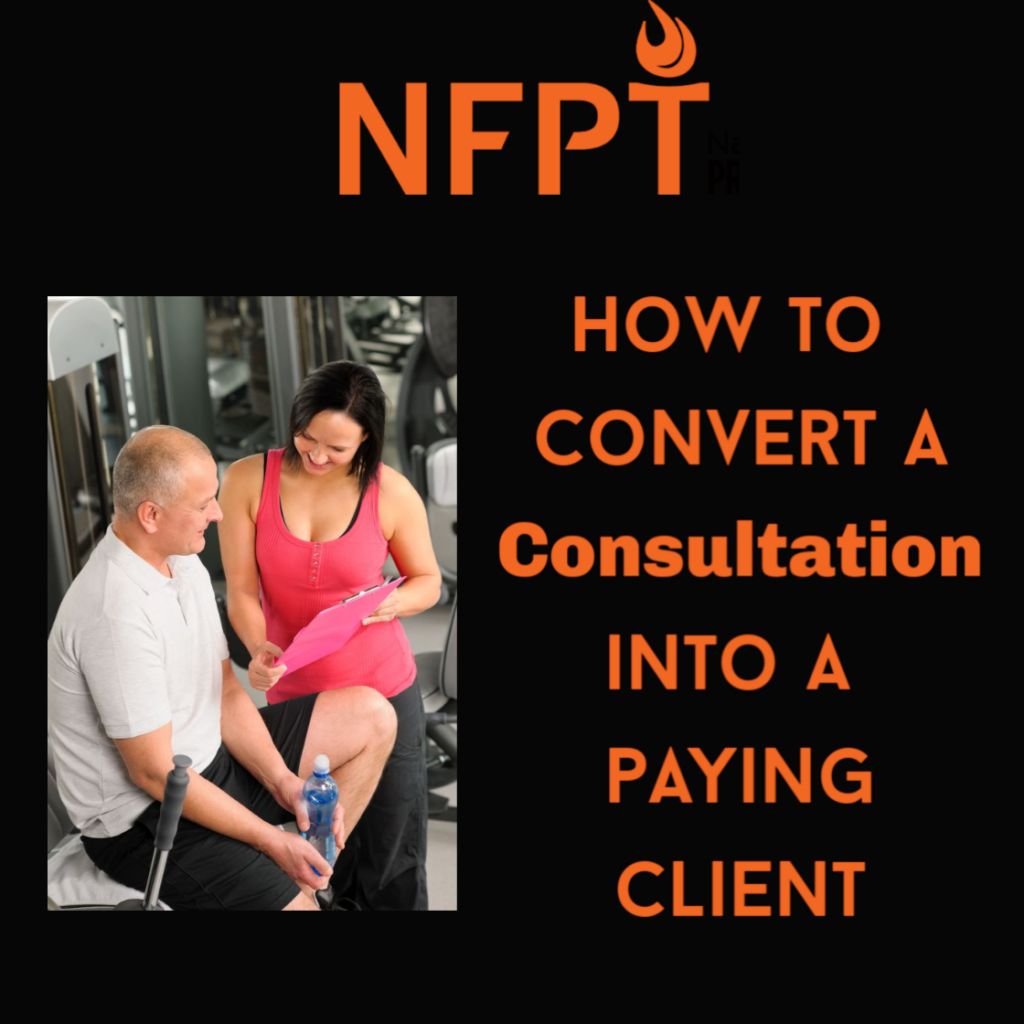New member consultations are an opportunity to work with a population that will benefit tremendously from a trainer’s expertise that might have otherwise missed out. If the consultation is approached in the right manner it won’t be a waste of time for the trainer; it can actually translate into a lot more business!
A majority of my clients have been sourced from new member consultations. Most of them were only doing it because it was free, and yet many of them ended up being long-standing clients. There can be an unfavorable light cast on new member consults, but I view them as golden opportunities. Armed with the appropriate attitude and necessary talking points, many of those new member consults can certainly convert to paying clients.
A Free Opportunity
Trainers tend to believe most new member consults are scheduled simply because they are free. Which, to be fair, there is a percentage that are. However, there are also plenty new member consults who checked “yes” because a part of them has been entertaining the idea of enlisting fitness guidance from a professional. By keeping this in mind, you can bring a renewed positive energy to your consultations.
If you are enthusiastic and provide a quality first experience for the new member, there is a significant chance she will be eager to start personal training sessions. It’s all about how the idea of training with you is presented and when.
Keep it Comfortable and Clear
Conducting a quality consultation can make all the difference in the world. Try not to “wing” it, but instead develop a method and system that works best for you. Try beginning new member consults with a general open-ended question and do your best to reflect back what the client says or summarize it in a sentence to make sure you understood:
“Why have you started a membership with us and requested the consultation?”
Not only does this give the trainer a sense of direction for the questions that follow it also gets the potential client thinking critically about their motivations and intentions. It will set the tone of the consultation. You can then follow that question up with (dependent on the previous answer):
“Have you ever considered working with a trainer?” or if it seems pertinent to be less direct
“What would you like to get out of this consultation?”
Both of these questions again require the client to consider their personal desires and goals. This also plants the seed of what it would mean to work with a professional. Instead of going through the consult thinking “This is a one-time thing” they start to think, “Well, I could do this more regularly. What would that look like and how would that benefit me?”.
After those two questions, leave the notion of further personal training sessions out of your conversation for awhile. Get to know the new member and ask all the other important questions related to first-time consultations. No need to overwhelm the new member or unintentionally make them feel uncomfortable by harping on possible training sessions. This may all but guarantee they will be turned off from the idea and make up their mind then and there.
New member consultations vary from gym to gym, but if time allows include a fitness/postural assessment or mini workout making progressions or regressions as needed—whichever showcases your skillset best—but do so without providing immediate feedback only positive words of encouragement, especially if the client is brand new to exercise.
Demonstrating something that will highlight your creativity and ability to provide a highly effective workout will be instant evidence of your value. This is also a way to evaluate their fitness level and body mechanics without making the him feel inadequate. At the conclusion of your consultation, you can ask if he would like your feedback on what you observed.
Simple and True
It requires confidence on the part of the trainer, a belief in professional abilities, and in personal training as a profession to turn a new member consult into a client. And then you have to “make the sale” by conveying the importance of what you have to offer to the member.
Here are two talking points I have found helpful in explaining to a new member why working with a trainer is effective and worthwhile.
Accountability: This is by far the greatest selling point of professional training. A personal trainer will provide a higher level of accountability than an individual working out on their own or even when doing it with a friend or partner. Because the trainer is not the client’s friend or family, there is a degree of bias and permissiveness that’s removed. A trainer won’t allow the client to make excuses and won’t be swayed by emotional obligation or guilt, the way a friend or spouse might.
The trainer will be friendly and respectful to the client, but they will not shirk their responsibility of giving their client a great workout because the client “doesn’t feel like it” that day. It is much harder to skip a workout when it is already paid for, and someone is waiting at the gym. With greater accountability comes a much greater chance of maintaining a regular fitness regimen.
You are a true professional: I know this seems an obvious point to make, but still make it! The average person may not realize how much critical thinking, scientific evaluation, planning a periodization, and hard mental and emotional work that goes into programming for each client. They may think “it’s just working out”.
The client isn’t seeing the years, the time, and the money spent to gain the trainer’s education. The client won’t know that trainers consider intensity, frequency, modality, etc, and how it all affects the client’s goals. The client won’t know. It’s not their job to know, it’s yours. Underscore the importance of consistency and how you possess the expertise to help them train towards their goals far more effectively than if they had no guidance.
Check Back
Allow for a few minutes at the end of the consultation to chat with the new member. Make the closing of your encounter feel semi-official and have somewhere for you both to sit down, rather than last-minute words at the front desk. This way the member won’t feel like the consult is “over” and actually take the time to consider what you are discussing and offering. This is when to present some options and reminders of what personal training can actually look like.
- This is my go-to tactic: Remind the client her that she doesn’t have to commit to months of sessions, she can test the experience out. I let them know that a lot of my new members will buy 2-4 sessions and see me once a week. This way the member won’t feel overwhelmed by the prospect of beginning a “Personal Training Journey”, it’s more like dipping her toes in the water. Generally, after working with a professional for a few weeks, she’ll be hooked and want to keep going.
- Do a short overview of the main talking points I discussed earlier. Remind him that when he works with you, not only is he getting one-on-one time with a professional, he also will have all of those workout programs to take home. So if they only do four sessions, that’s four workouts uniquely designed for him and his goals appropriate for future use
New gym member consultations can be tricky and may sometimes feel like a waste of time. But really, they’re an opportunity to impact individuals who didn’t know they needed fitness guidance or even to fine-tune your consultation skills.




